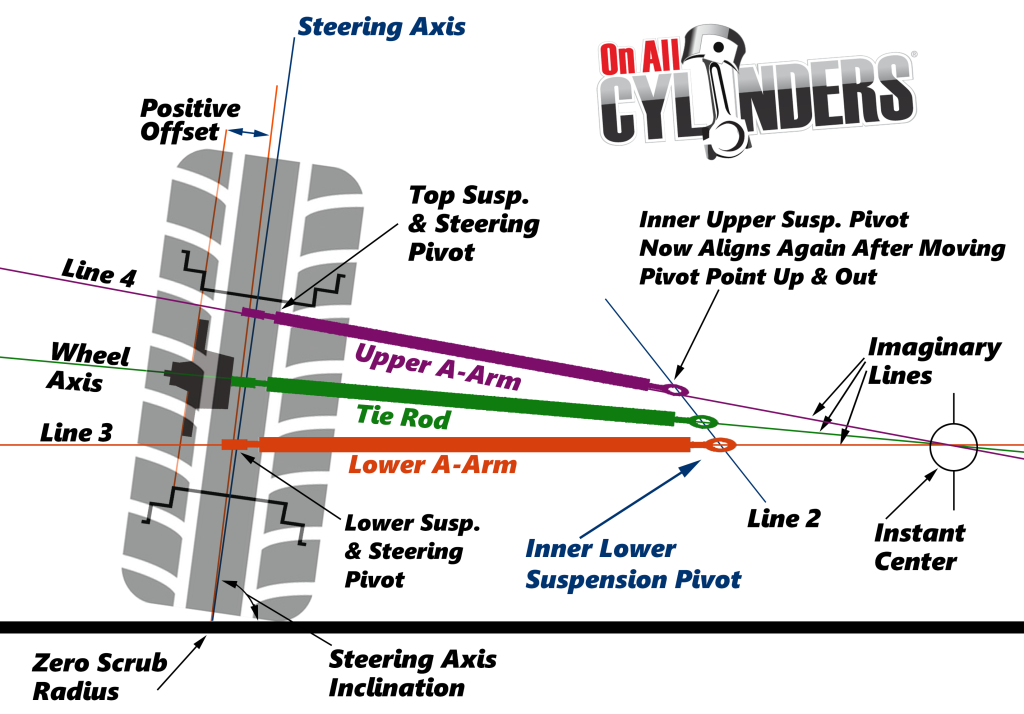What is Bump Steer?
It is the term for when your wheels steer themselves without input from the steering wheel. It is caused by bumps in the road or track interacting with improper length or angle of your suspension or steering linkages.
Most car builders design their cars so that the effects of bump steer are minimal. However, you must still take care to bolt on your suspension carefully so as not to create unwanted bump steer. Make sure that you are always using the correct components for a particular vehicle. Bump steer must be designed into the build and cannot be adjusted out if improper parts are used or if pivot points are moved without considering bump steer design principles.

How to Prepare Your Vehicle for Bump Steer Measurement
Your front suspension must be complete and set for driving or racetrack conditions before you can measure the bump steer. All components must be tight and in proper position and you will need a quality bump steer gauge.
- Set the vehicle at ride height.
- Use the proper size tires and air pressures.
- Caster must be set.
- Camber must be set.
- Toe-in must be set.
- Tie rod lengths must be set.
- Steering should be centered (tie rod ends centered on inner pivot points lower ball joints).
- Steering must be locked down.
- Measure from the ground to the lower ball joint or other reliable reference point. Write the number down.
- Remove springs and disconnect the sway bar.
- Return the suspension to the proper height by using your reference number to the ground.
- Obtain a supply of bump steer shims.
- Bolt on the bump steer plate to the hub. Level the plate and note where the dial indicator is on the bump steer plate so that you can quickly return to the correct ride height.
- Jack the suspension through two to three inches of both compression and rebound travel and write down your results.
- Shim as needed.
How to Correct Bump Steer
Now that you have measured your bump steer, you will need to adjust, shim, or relocate the suspension components to get the correct readings. Below are some tips to guide you through the corrective process for vehicles with front steer style suspension.
Bump Steer Troubleshooting Diagnostic Tips
| Symptom | Cure |
|---|---|
| Toes out in compression and in on rebound all in one direction. | Decrease shim on outer tie rod or lower the inner tie rod. |
| Toes in on compression and out in rebound all in one direction. | More shim at outer tie rod or raise the inner tie rod. |
| Always toes in both compression and rebound. | Lengthen the tie rod as it is too short. |
| Always toes out on compression and rebound. | Shorten tie rod as it is too long. |
| Toes out on compression, then in on rebound and then starts back towards out with more rebound travel. | Less shim at outer tie rod and shorten tie rod. |
| Toes in on compression, then moves out on rebound and then starts back towards in with more rebound travel. | More shim at outer tie rod and lengthen tie rod. |


Brilliant stuff. some cowboys are having a war with me because I pointed out their lowering kit was , lets say potentially not what the driver ordered .
Seems like a hell of a lot of work to me. Why not just by tie rod ends that are specially made for bump steer. Just because you do all that doesn’t mean it will stay within tolerance. Stats, shocks, coil overs all sag as they weaken. Same with springs.